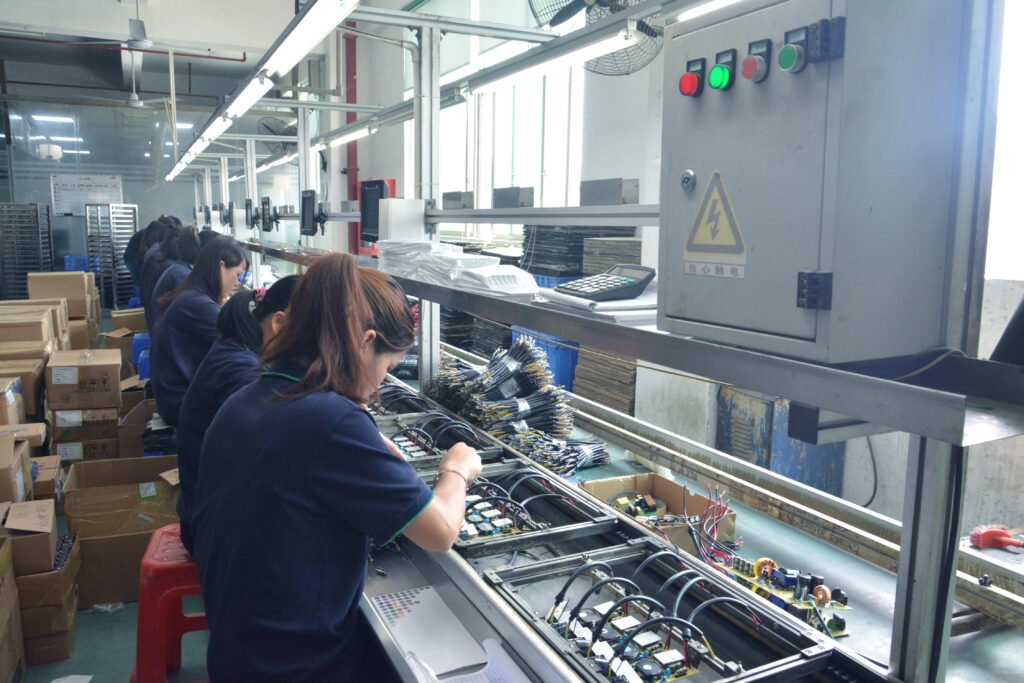LED, short for Light Emitting Diode, is a programmable semiconductor device that gives off light when an electrical current is passed through it. Types of LED include dimmer switches, LED lighting tubes, graphene light, Chip-on-Board LED, Surface-on-Board LED, RGB LED, and lots more.
An LED requires a LED driver – a power supplying interface that converts AC from the mains to DC to light up the luminaire (or the lighting application).
An LED driver that is suitable for powering up lights is the best.
The most common use for LED drivers are lights, e.g., indicator lamps, brake lights, and billboard lights.
True to its name, an LED driver drives power to one or more LEDs. An LED depends on the LED driver to stabilize the electrical current.
LEDs work on only DC powering at a low voltage, often between 12V and 24V. For this, it needs something that helps them switch from AC to DC and prevents power surges that could occur, resulting in overheating and malfunctioning.
Constant Voltage Vs. Constant Current
Since LED drivers require a consistent power supply, an important question is how to properly deliver power without destroying the LED assets. Two power dispensation methods are popular: constant voltage and constant current.
A constant current LED driver delivers precise and careful current over a given range of output voltages. It supplies a continuous current output expressed in mA or A.
The constant voltage LED drivers, on the other hand, are made to deliver a single DC output voltage. It sends a highly regulated output voltage throughout all load conditions to the LED lights.
What is the CC?
The constant current (CC) LED driver delivers a continuous, optimal current for the light output. It is mainly used in high-powered lighting applications.
CC is used mainly in LED downlights, office lighting, retail lighting, residential LED lighting, entertainment lighting, and LED lighting.
What is the CV?
The constant current (CV) LED driver is a tightly regulated design and keeps supplying the output voltage up to a maximum current limit. The overcurrent protection (OCP) will switch off the DC supply. Regular CV drivers are within the 12VDC to 24VDC range.
CV is applied in LEDs arranged in parallel, LED strips, LED light engines, moving signs, stage lighting, high bay, and outdoor lighting.
What are the CC and the CV?
CC and CV are two basic expressions that describe the power supply method of an LED. They are the two basic types of LED drivers. They differ in the way they deliver power for efficient LED lighting while preventing damage to the device.
Constant current LED driver is designed for a broad range of output voltages and a fixed output current (mA). A CC LED driver varies the voltage across an electric circuit, allowing the current to remain consistent throughout the LED mechanism.
On the other hand, a constant voltage LED driver is designed for a single direct current (DC) output voltage. A constant voltage LED driver transforms the alternating current (VAC) current to a low direct current (VDC) voltage. The CV driver will maintain a consistent voltage irrespective of the load that is delivered to it. Most constant voltages are rated 12VDC or 24VDC with a power supply of 120 to 277VAC – the kind of power supply see in homes.
How do I choose an LED driver?
The requirements for choosing an LED driver are:
Output Power
A more excellent driver output power than the LED module must provide appropriate wattage for task lighting applications. Output power will ensure more excellent protection. Output power shows in the datasheet as Watts (W).
Output Current
The current operational range of the driver must not be more than that of the LED. Maintaining the output current that way ensures can increase the lifespan of the LED driver. Output current shows in the datasheet as milliamperes (mA) or Amperes (A).
Output Voltage
The LED driver’s operating voltage must be equal to the product of the forward voltage drops and the number of LED devices used in the application. For multiple LED arrangements, each LED requirement is lumped together for a total value. Output voltage in the driver datasheet expresses in Volts (V).
Input Voltage
The LED driver should check the input voltage of the area where the LED is being used. Standard homes typically supply 120 volts, while most commercial businesses supply 277 volts. Overall, most LED drivers are usable over a wide array of input voltages.
IP Rating
The two-digit code for the IP rating on the LED driver describes the friendliness of the device environment and the water protection required. The first number tells you the security needed for solid objects. The second number tells you the safety of the device against liquids.
For example, an IP67 rating is waterproof and safe from dust, excess heat, and temporary submersion in water.
There is also a potting compound in the LED power supply that transmits heat away from the vital components to the surface, reducing heat stress and enhancing the durableness of the details.
Choose a driver with a suitable rating according to where you will use it.
Package
Package determines whether it will need an LED driver with a covering/encapsulation or one built into the system. Open frame LED drivers usually use in the application.
Termination
Termination refers to how the LED driver is connected. Some drivers come with flying wires attached. At times, you may need to buy wires separately.
Size
The size of the LED driver is the presentation aspect of the driver. The driver is available in many shapes and forms, such as linear, rectangular, and round.
Summary
The LED industry is evolving every day, and highly powered LEDs usually demand because of their lighting efficiency, longevity, and cost-effectiveness. Interestingly, the LED driver is the critical component that increases the popularity of LEDs.
The LED driver serves as a safety device that manages the electrical current. It is like the tap to one’s LED’s current supply.
An LED never dims by itself; an LED driver device helps control the luminaire’s brightness.
Standard parameters users should look out for when buying a LED driver for their luminaire include output power, output current, output voltage, input voltage, and IP rating.
Knowing the right mix of LED driver functionality ensures the purchase of the right product that provides uninterrupted lighting over a long time.


